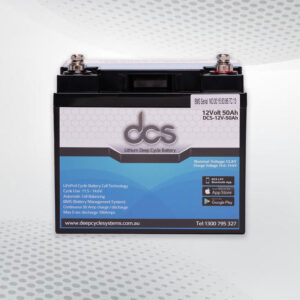In today’s fast-paced digital landscape, the need to modernize legacy applications has become imperative for businesses aiming to stay competitive and relevant. Legacy applications, once cutting-edge, now risk hindering growth, scalability, and innovation due to outdated technology stacks, inefficient processes, and security vulnerabilities. Transforming these applications into agile, resilient, and future-ready systems is key. Here, we delve into the top trends driving the modernization of legacy applications.
List of Top 10 Modernization Legacy Applications Trends
1. Cloud Migration and Adoption:
The shift to cloud computing has revolutionized application development, deployment, and management. Modernizing legacy applications often involves migrating them to cloud platforms like AWS, Azure, or Google Cloud. Cloud-native architectures offer scalability, flexibility, and cost-efficiency, enabling businesses to seamlessly leverage advanced services such as AI, machine learning, and IoT.
2. Microservices Architecture:
Decomposing monolithic legacy applications into microservices has gained traction as a preferred modernization strategy. Microservices enable modular development, allowing teams to work independently on smaller, focused components. This approach enhances agility, scalability, and fault isolation, enabling faster iteration and deployment cycles.
3. Containerization with Kubernetes:
Containerization, coupled with orchestration tools like Kubernetes, is central to modern application deployment. By encapsulating applications and their dependencies into lightweight containers, organizations achieve consistency across different environments and streamline deployment processes. Kubernetes provides automation, scalability, and resilience, making it ideal for managing containerized applications at scale.
4. DevOps and Continuous Integration/Continuous Deployment (CI/CD):
Embracing DevOps practices and CI/CD pipelines is essential for accelerating the modernization journey. DevOps fosters collaboration between development and operations teams, promoting automation, transparency, and efficiency. CI/CD pipelines automate testing, integration, and deployment processes, enabling rapid and reliable delivery of updates and enhancements to legacy applications.
5. API-First Approach:
Adopting an API-first strategy facilitates seamless integration and interoperability between legacy systems and modern architectures. Exposing legacy functionalities as APIs enables easier consumption by new applications, mobile devices, and third-party services. This approach promotes agility, innovation, and scalability while preserving existing investments in legacy systems.
6. Data Modernization and Analytics:
Modernizing legacy applications involves unlocking the value of data assets through advanced analytics, machine learning, and artificial intelligence. Leveraging modern data platforms and analytics tools allows organizations to gain actionable insights, enhance decision-making, and drive innovation. Data modernization encompasses data cleansing, migration, and integration to ensure data quality, integrity, and accessibility.
7. Security and Compliance:
Enhancing security and compliance posture is paramount when modernizing legacy applications. Legacy systems often lack robust security features and are vulnerable to cyber threats and compliance breaches. Modernization initiatives should prioritize implementing robust security controls, encryption mechanisms, and compliance frameworks to safeguard sensitive data and mitigate risks effectively.
8. User Experience (UX) and Interface Modernization:
Improving user experience and revamping outdated interfaces are essential aspects of modernizing legacy applications. User expectations have evolved significantly, necessitating intuitive, responsive, and visually appealing interfaces. Modernization efforts should focus on redesigning user interfaces, enhancing accessibility, and optimizing workflows to deliver superior user experiences across devices and platforms.
9. AI-Powered Automation:
Leveraging artificial intelligence and automation technologies streamlines the modernization process. AI-powered tools analyze codebases, identify legacy components, and recommend modernization strategies based on industry best practices and organizational goals. Automation accelerates tedious tasks such as testing, refactoring, and documentation, enabling teams to focus on high-value activities.
10. Agile Transformation and Cultural Shift:
Modernizing legacy applications requires not just technological advancements but also a cultural shift toward agility, collaboration, and innovation. Embracing agile methodologies empowers teams to iterate quickly, adapt to change, and deliver value incrementally. Cultivating a culture of continuous learning, experimentation, and feedback fosters innovation and resilience in the face of evolving business requirements.
Conclusion
Modernization legacy applications is a strategic imperative for organizations seeking to thrive in today’s digital economy. By embracing cloud-native architectures, microservices, DevOps practices, and emerging technologies, businesses can transform their legacy systems into agile, scalable, and resilient assets. A legacy software modernization company plays a crucial role in guiding organizations through this transformative journey. However, successful modernization requires careful planning, collaboration, and a commitment to change at both technological and cultural levels. As organizations embark on their modernization journey, staying abreast of these top trends will be instrumental in driving success and achieving sustainable competitive advantage.
FAQs: Modernizing Legacy Applications
1. Why is modernizing legacy applications important?
Modernizing legacy applications is crucial for businesses to remain competitive and relevant in today’s digital landscape. Legacy applications, while once innovative, can now impede growth, scalability, and innovation due to outdated technology stacks and inefficient processes. Modernization transforms these applications into agile, resilient, and future-ready systems, enabling businesses to adapt to changing market demands and leverage emerging technologies effectively.
2. What are the key challenges in modernizing legacy applications?
Modernizing legacy applications can present various challenges, including complexity in understanding and documenting legacy codebases, resistance to change from stakeholders, and the risk of disrupting existing business operations. Additionally, ensuring data integrity, maintaining security and compliance standards, and managing legacy integrations pose significant hurdles during the modernization process.
3. How does cloud migration contribute to modernizing legacy applications?
Cloud migration offers numerous benefits for modernizing legacy applications, including scalability, flexibility, and cost-efficiency. Migrating legacy applications to cloud platforms like AWS, Azure, or Google Cloud enables businesses to leverage advanced services such as AI, machine learning, and IoT seamlessly. Cloud-native architectures provide a foundation for modernization, facilitating easier integration, deployment, and management of applications.
4. What role does microservices architecture play in modernization?
Decomposing monolithic legacy applications into microservices is a popular modernization strategy that promotes agility, scalability, and fault isolation. Microservices facilitate modular development, allowing teams to work independently on smaller, focused components. This approach enables faster iteration and deployment cycles, leading to improved flexibility and responsiveness to evolving business requirements.
5. How does AI-powered automation aid in the modernization process?
Leveraging artificial intelligence and automation technologies streamlines various aspects of the modernization journey. AI-powered tools can analyze legacy codebases, identify obsolete components, and recommend modernization strategies based on industry best practices. Automation accelerates tedious tasks such as testing, refactoring, and documentation, allowing teams to focus on high-value activities and expedite the modernization process.




